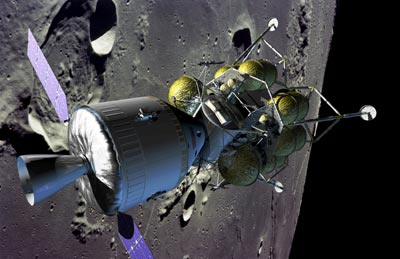Protecting the space workforceby Taylor Dinerman
|
| The layoffs at NASA and at the contractors in the 1970s threw away a generation’s worth of highly qualified men and women. |
The history of the shuttle’s development on a shoestring budget throughout this period is an example of the way NASA tried and failed to keep the Apollo mystique alive in spite of the budget cuts. The widely believed claim from that time was that they were building the “DC-3 of Space”. Instead of confronting the politicians and the public with the truth—that the Shuttle was a delicate and limited space vehicle—the space agency’s leaders dazzled everyone with the idea that cheap and abundant access to space was just around the corner.
Meanwhile stories, which may have been apocryphal but were eminently credible, circulated of PhD rocket engineers driving cabs in LA and Florida. The layoffs at NASA and at the contractors threw away a generation’s worth of highly qualified men and women. When in the 1980s they were once again needed to support the Reagan-era buildup, a good proportion of them were unwilling to take the risk of rejoining an industry that served a government customer who had unceremoniously dumped them.
The aerospace industry as a whole, and the space industry in particular, were able to get around this problem partly by aggressively recruiting overseas. Even so, many of the 1980s-era space programs suffered from the lack of an experienced workforce. Aside from the Challenger disaster, the best example is the flawed Hubble Space Telescope, which was launched with a defective main mirror.
At the Pentagon, problems with contractor performance led to the buildup of a skilled and skeptical group of acquisition specialists who were able, within the limits of the possible, to keep to industry honest. These men and women were let go in 1993 when the Clinton Administration decided that their planned cuts to the civil service would fall almost entirely on the Defense Department.
The results are well known to the industry. Without this cadre of specialists flawed projects such as the National Reconnaissance Office’s (NRO) Future Imagery Architecture (FIA) and the joint civil-military National Polar-orbiting Operational Environmental Satellite System (NPOESS) were given the green light. The difficulties that still afflict these programs and others that began in the 1990s are not only eating up important parts of the budget, but are pulling many of the industry’s best people away from other important work that they should be doing.
So now the space industry is facing the very real possibility of a series of major cutbacks that could once again devastate its ability to compete. According to a recent report in Aviation Week, the aerospace and defense industry as a whole has cut 30,000 jobs recently. This may be only the beginning. The administration shows little desire to defend this sector and the President himself seems eager to veto a budget with “exotic” systems.
| If the Constellation program is gutted, as now seems likely, it will take years or decades to rebuild the expertise that was lost. America’s leadership in space, which has been the principal goal of every President’s space policy since Eisenhower, will be at risk. |
The cutbacks at Boeing and the 900 jobs that are being lost at Lockheed Martin are in response to the previous cancellation of T-Sat and other military space programs. While it is claimed that the shortfall in communications capability will be made up with a couple of extra AEHF satellites, there seems to be no serious program underway to fill the inevitable large-scale requirements for bandwidth that will occur in the later half of the next decade. The men and women who are needed to build that next generation of military communications systems are now unemployed and there is every possibility that they will never work on another highly advanced military space program.
According to Aviation Week the industry claims to have learned its lessons and will make every effort to maintain a balanced workforce. One wishes them the best of luck, but the pressures on them, from both shareholders and from their unions, may make it impossible for them to hire a new generation of workers and engineers.
With NASA’s current outyear budget projections billions of dollars below earlier estimates and the decisions stemming from the Augustine committee’s final report still up in the air, the prospects for the traditional US space industry do not look good. If the Constellation program is gutted, as now seems likely, it will take years or decades to rebuild the expertise that was lost. America’s leadership in space, which has been the principal goal of every President’s space policy since Eisenhower, will be at risk.
No matter how promising the NewSpace industry is, it cannot, by itself, carry the whole burden of the DoD and NASA’s future needs. Boeing and Lockheed Martin and the other big space firms are facing serious dangers to their ability to carry out the jobs that the nation has long expected them to do.
For the time being it is going to be up to Congress to keep the space industry on life support. In this case the politicians on Capitol Hill will have to show the courage to ignore the traditional thoughtless cries about pork-barrel spending and save an irreplaceable national asset: the men and women of the US space industry.
